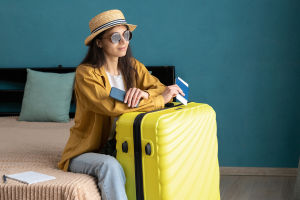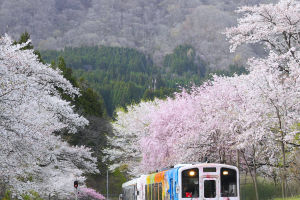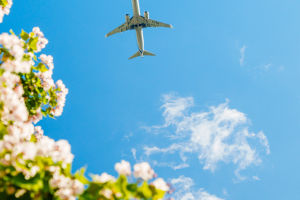Getting around New York City can feel like decoding a fast-moving puzzle.
But once you learn how the city's public transport works, it becomes an efficient, affordable, and even exciting way to explore the city.
Whether you're visiting for a few days or planning a longer stay, mastering NYC's public transport system is a huge travel win.
New York
1. Understanding the MTA Network
New York City's main public transport system is run by the MTA (Metropolitan Transportation Authority). It includes:
- The Subway: The fastest way to move between boroughs.
- City Buses: Great for short distances or when you want to see the city as you go.
- Staten Island Ferry: Free and offers great views of the Statue of Liberty.
The subway runs 24/7, which is rare for a global city. But schedules vary on weekends and at night, so always check updates on the MTA app or website.
2. Choosing the Right Ticket Option
The MTA now uses OMNY (One Metro New York), a tap-and-go system. But MetroCards are still accepted.
Here are the main options:
1. Pay-Per-Ride MetroCard or OMNY Tap
• Cost: $2.90 per ride
• Good for: Short stays or casual travel
• Transfers between subway and bus are free within 2 hours
2. Unlimited MetroCard
• 7-Day Unlimited Ride Card: $34
• 30-Day Unlimited Ride Card: $132
• Good for: Travelers staying more than 3–4 days and using transport multiple times daily
3. OMNY Weekly Fare Capping
If you use OMNY and take 12 paid rides in 7 days (Monday–Sunday), the rest of the week is free.
Tip: If you're traveling with family or friends, each person needs a separate card or OMNY payment method.
3. How to Navigate the Subway
New York's subway is huge, with 472 stations. Here's how to avoid getting lost:
1. Use the Right Apps
• Several navigation apps available to compare subway, bus, walking, and taxi times
• MTA TrainTime or MYmta: Official real-time updates on train status and delays
2. Understand Subway Directions
• Uptown: Going north (towards The Bronx or Harlem)
• Downtown: Going south (towards Brooklyn or Lower Manhattan)
Each line has a letter or number (e.g., A, C, 1, 6) and color, but the color doesn't determine the train — follow the number/letter.
3. Express vs. Local
• Local trains stop at every station
• Express trains skip some stations — great for faster travel, but double-check you don't miss your stop
4. Taking the Bus Like a Local
Buses are underrated. They offer above-ground views and are useful for areas with fewer subway stops (like the Upper East Side or Red Hook, Brooklyn).
How to ride:
• Tap your OMNY or use your MetroCard
• Most buses stop every 2–3 blocks
• Some major routes: M15 (East Side), M5 (goes through Central Park West), B41 (Brooklyn)
Note: You must board at the front and exit from the rear unless you have a mobility device.
5. Airport to City Tips
1. JFK International Airport → Manhattan
• Take the AirTrain ($8.50) + subway (E train at Jamaica Station or A train at Howard Beach)
• Total cost: Around $11.40
• Travel time: 60–75 minutes
2. LaGuardia Airport → Manhattan
• Take the Q70 SBS bus (free) to Jackson Heights–Roosevelt Avenue subway station, then transfer to subway
• Fastest + cheapest method
3. Newark Airport (EWR)
• Take AirTrain Newark to NJ Transit, then Penn Station
• Total cost: $15.75
• More complex than the others
6. Safety Tips for First-Time Riders
• Avoid empty subway cars, even if tempting
• Always wear your backpack in front in crowded trains
• Hold your phone securely and stay aware of your surroundings
• Avoid traveling alone on unfamiliar lines late at night
Despite the urban myths, NYC subways are generally safe, especially during the day. And yes, New Yorkers may look hurried, but most are surprisingly helpful if you ask for directions.
7. Helpful Transit Phrases & Etiquette
• "Is this train going uptown or downtown?" (Always ask if unsure.)
• "Next stop?" (If you think you missed your stop.)
• "Excuse me" is your best tool for navigating crowds.
• Avoid blocking doors and don't take up more than one seat.
8. Where to Stay for Easy Subway Access
If subway access is your priority, stay near these stations:
1. Times Square–42nd Street: Connects to many lines (1, 2, 3, N, Q, R, A, C, E, and Shuttle).
2. Union Square–14th Street: Serves uptown/downtown and cross-town travel.
3. Grand Central–42nd Street: Especially convenient if visiting the East Side or taking Metro-North.
Hotels range from budget (Pod Times Square) to mid-range (citizenM, Hyatt Grand Central).
9. Must-Try Local Eats Near Major Stations
1. Joe's Pizza (near Times Square): Iconic NYC slice
2. Shake Shack (Grand Central Lower Level): Fast but high-quality
Final Thoughts: Get Lost, and Learn
Part of the NYC transit experience is making mistakes — missing a stop, hopping on the wrong train, or walking a few extra blocks. But that's how the city opens up to you. If you stay calm, keep a good app handy, and go with the flow, you'll not only get where you need to be — you'll learn to love the ride.
Have you tried navigating NYC's subway yet? What was the most confusing or surprising part for you? Let's trade tips!


